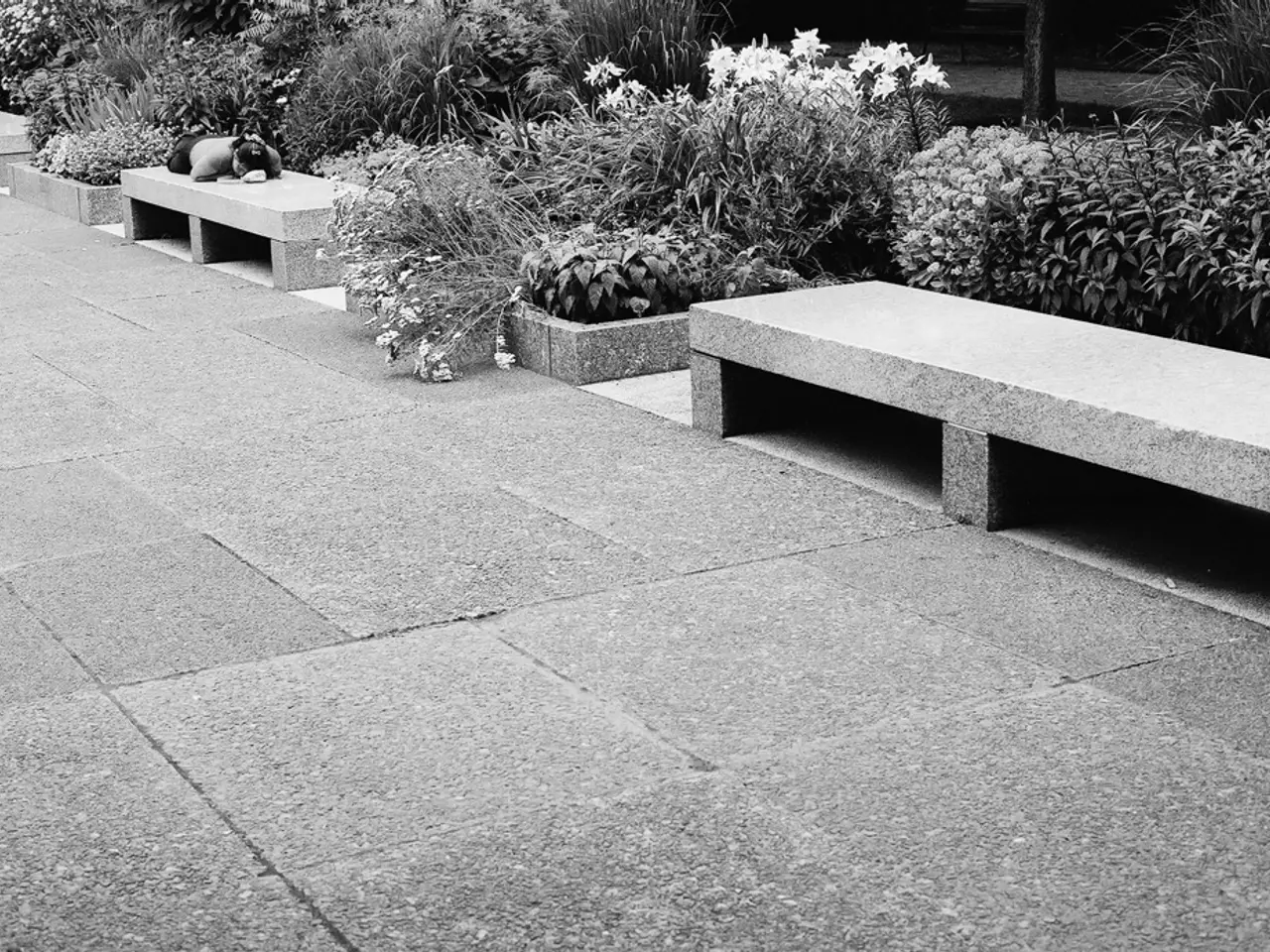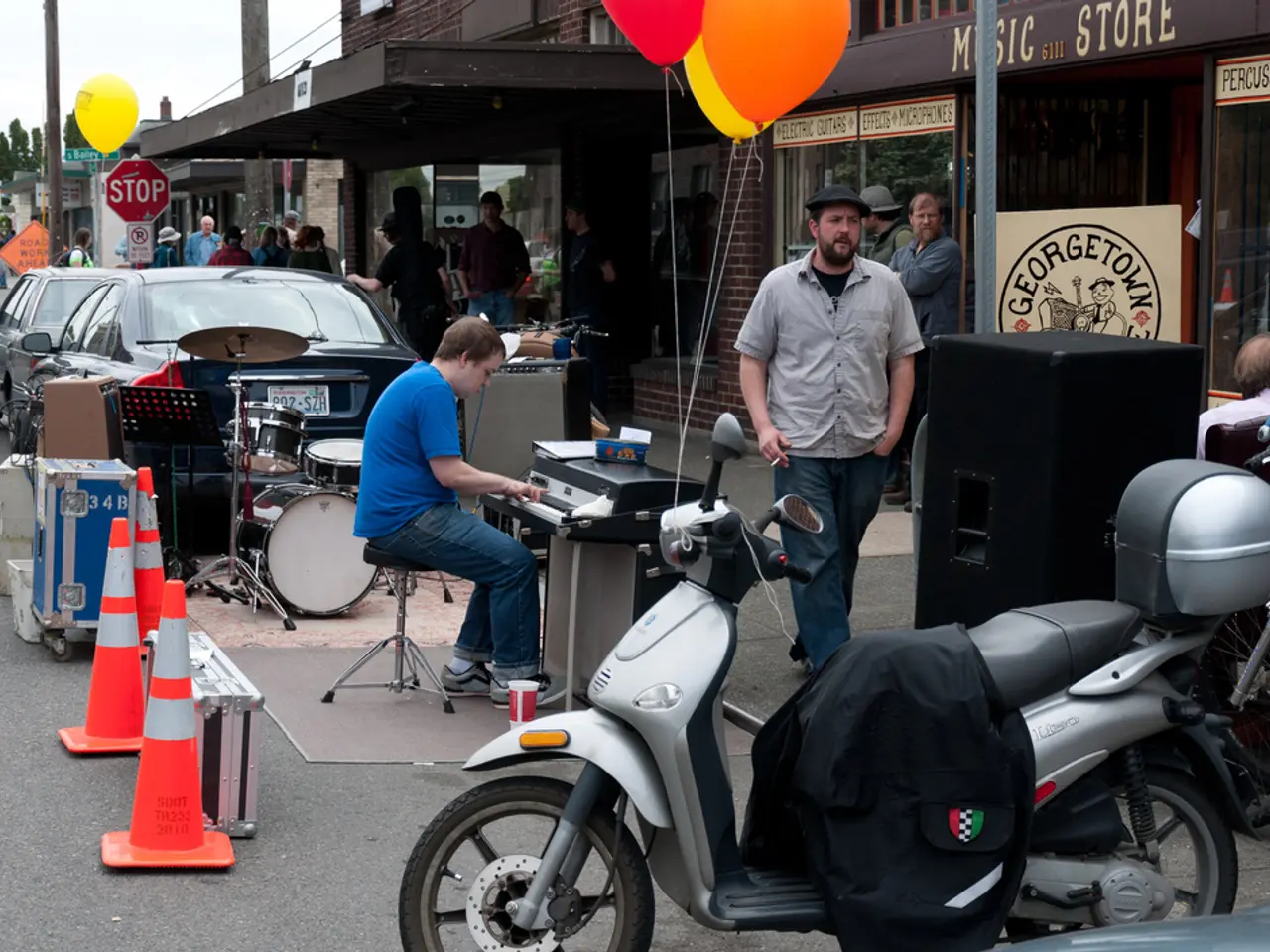Redesigned Garden Layouts with Comfort in Mind for Healing Horticulture
Designing an inclusive and therapeutic garden offers numerous benefits, from reducing stress to providing gentle physical activity. To create such a garden, careful consideration must be given to several key elements, ensuring comfort, safety, and accessibility for people of all abilities. Here's a guide to help you design an ergonomic and accessible garden:
## Key Design Elements
### Raised Beds and Adjustable Height Features Raised beds are a crucial element in therapeutic garden design, bringing the garden up to a comfortable height to reduce bending, kneeling, or overreaching. This is particularly beneficial for wheelchair users and those with limited mobility. Incorporate adjustable height benches and tables to accommodate different users, ensuring everyone can comfortably engage in gardening activities.
### Wheelchair Accessibility Wide and smooth pathways, made from firm, level materials like stone, pavers, or decomposed granite, are essential for wheelchair accessibility. Pathways should be at least 90 cm wide and have non-slip surfaces to facilitate easy navigation. Use ramps or gentle slopes instead of stairs to ensure smooth transitions between different levels of the garden.
### Ergonomic and Adaptive Tools Ergonomic tools with padded grips, extended handles, or lightweight designs are crucial in therapeutic garden design. These tools reduce strain on joints and improve control for people with arthritis, limited dexterity, or tremors.
### Sensory and Visual Elements Incorporate a variety of textures, colors, and scents to create a rich sensory experience. This can include plants with different textures, colors, and fragrances. Use layering techniques with plants of varying heights and textures to create visual depth and interest.
### Accessibility for All Abilities Inclusive seating areas should be easily accessible and comfortable for all users, including those with mobility issues. Clear signage and well-defined pathways help visitors navigate the garden easily.
### Sustainability and Maintenance Choose low-maintenance plants that require less water, such as native shrubs, to reduce upkeep. Consider installing rainwater harvesting systems or drip irrigation to minimize water usage. Sustainable materials like recycled materials for building beds, native plants, and composting bins can be incorporated in a therapeutic garden design.
## Design Principles To create a cohesive and inviting space, apply landscape design principles such as unity, balance, emphasis, rhythm, and scale. These principles help organize the layout, support site development, and enhance the overall experience of the garden.
By integrating these elements and principles, you can design a garden that is both beautiful and accessible to people of all abilities, engaging all the senses and offering a relaxing, wellness-focused activity for seniors, people with arthritis or chronic pain, children, individuals in rehabilitation or recovering from surgery, and more.
Keywords: therapeutic garden, ergonomic garden, accessible garden, wheelchair accessibility, sensory garden, sustainable garden, low maintenance garden, native plants, rainwater harvesting, drip irrigation, recycled materials, composting bins.
- Incorporate raised beds and adjustable height features in the therapeutic garden design to bring the garden up to a comfortable height, benefiting wheelchair users and those with limited mobility, and use adjustable benches and tables to accommodate different users.
- For wheelchair accessibility, create wide and smooth pathways with firm, level materials, ensuring they are at least 90 cm wide, have non-slip surfaces, and have ramps or gentle slopes instead of stairs.
- Utilize ergonomic and adaptive tools in the garden design, such as those with padded grips, extended handles, or lightweight designs, to reduce strain on joints and improve control for individuals with arthritis, limited dexterity, or tremors.




